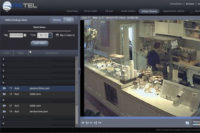‘Mega’ Hit? More than More Pixels

Bigger isn’t always better and less can beat more. Important keys to the video kingdom now include aspect ratio, actual resolution, frame rate and color rendition. Standards are essential except when they are not. Some images look spectacular on the exhibit floor but seem to wilt under the parking lot lights on Green Street. Especially when a pixel count gets higher, the lens can make trouble. Driven in part by live football games on home HDTVs, expectations of enterprise security leaders may be nearly impossible to meet in their security world or the price tag can significantly fall outside the budget. And when you bring in certain types of cameras, the dominoes – expensive, expected, complex and unanticipated – can start falling.
Enough said about megapixel and high definition (HD) cameras. Or is it?
If you start with the main differences between HD and megapixel, some answers are up for debate or stuck in marketing muck. All digital HD cameras are megapixel; some megapixel cameras are HD; some cameras with megapixel resolution have HDTV capacity; and, by the way, in today’s truthiness world, some HD cameras may not be HD but only “in the style of.”
Got a headache yet? Hang on.
Basically, knowledgeable integrators, who handle numerous security camera installations and camera brands, don’t look at “megapixel” as a recognized standard but rather an adaptation of the industry’s best practices, specifically referencing the number of image sensor elements of the digital camera. A megapixel camera doesn’t necessarily guarantee high image quality.
Motion Imaging Standards In Play
A camera that complies with any given HDTV standard ensures video quality at all times. And speaking of standards, just as consumer camcorder developments many moons ago brought CCDs to security cameras (an ironic twist on “down the tubes”), the consumer-oriented broadcast industry is today’s standards enabler thanks to the Society of Motion Picture and Television Engineers, a technical society for the motion imaging industry, and its SMPTE HDTV standard.
Of course, there is no single type of camera that is appropriate for all applications, according to James Marcella, director, technical services, Axis Communications. His suggestion: Only by carefully analyzing the goals of the video surveillance installation can the right requirements be defined. Often the answer lies in combining HD cameras and megapixel cameras with a selection of standard resolution cameras that are optimized for other needs. By balancing different types of network cameras, a solution can be designed that is effective, reliable and cost-efficient and fulfills the desired image usability.
No doubt, the bottom line on megapixel and HD cameras is increasing the resolution when viewing, storing or retrieving and viewing video, adds Marcella, who identifies complementary elements such as intelligence at the edge or at the server, bundled into network cameras, tamper resistant, video motion detection, people counting, the control of bandwidth and the need for more and different storage.
Testani emphasizes that standard HD is 720 and 1080 pixels with a 16:9 aspect, but realize that the higher the resolution, the higher the bandwidth and the overall cost of ownership will be higher at this point.
What About the Storage?
Then there is increased cost of storage when moving to megapixel and HD cameras.
Combining megapixel cameras with a powerful video management system and flexible storage, Boch Automotive, the number one Toyota dealer in New England and the number one Honda dealer in the U.S., had an analog surveillance system that no longer was able to meet the demands of the high-profile auto dealer. New technology including storage from Intransa was installed. “With one comprehensive solution, we were able to immediately address the growing risk of theft and loss, while providing increased coverage, improved image quality, longer retention times and greater reliability,” says Ernie Boch, Jr., the CEO and president.
For many buyers, there is a transition from analog to digital, which can include megapixel cameras and networking.
For example, Merced College in Merced, Calif., has deployed a HD surveillance system from Avigilon as part of its proactive crime prevention strategy that includes advanced image clarity and to ease the transition from analog to HD performance as budget allows. “A key differentiator is the fact that it enables us to zoom in to examine specific details of an event while it is still recording, a feature we initially thought was too good to be true,” explains Deputy Sheriff Wilde of the Merced College Police Department.
Looking for a reprint of this article?
From high-res PDFs to custom plaques, order your copy today!





